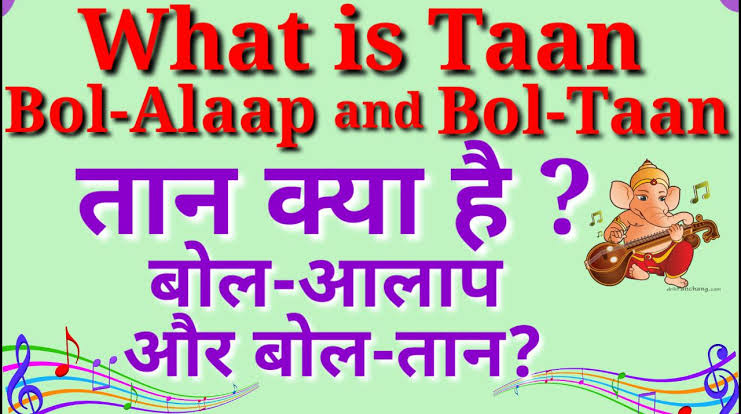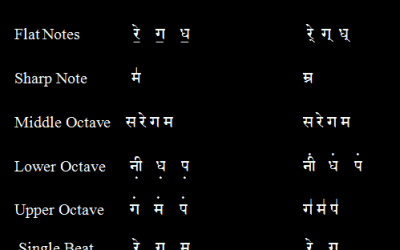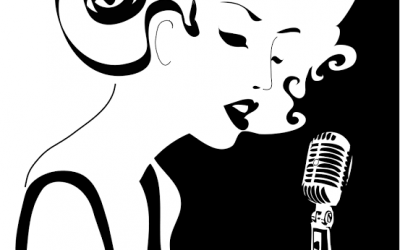Alaap-Taan and Other Definitions in Ancient Times
In ancient times there was a healthy rule to create an Alaap. In the book of Sangeet Ratnakar has its description:
Entire raag is dependent on Ansh Swara. That’s is only called Sthaai. The fourth swara of sthaai is called ‘divyurth’. The eighth swara is called divgun. Swaras between fourth and eighth Swara are called ‘arthswithan swara’. In first rule, singer has to sing lower than ‘divyurth’ swara is important. Similarly there are four healthy rules of alaap. Every singer has to use appropriately the rules to produce alaaps. To start from anywhere and end somewhere was not available rule at that time.
Rupakamlaap
It is considered the second type in ancient alaap method which is considered ‘roopkaal’. There is one more part of this type.
Roopkalaap is similar to management of metal, different parts of alaap need to be showed to singer. The final vowels used to come in these parts were called ‘Apatyaas’ . The singers describing Alaap also used to tell that they are singing an unfavu raaga but there is no need to say anything. These things were automatically evident in management. Roopkalaap was wordless and did not have lyrics or rhythms, etc. Thus the Roopkalaap had a special significance over the ragalap and was considered to be the next step of the ragalap.
Aalpati-Gaan
To move ahead of ‘Alapti’, it is the turn of ‘Alaazi’ while performing the raga, it is called ‘lazy song’.
Aavibharv-Tirobhaav
While explaining any raaga, the natural raaga coming in between. By showing small pieces, to hide the main raga for a while, it is called ‘tirobhava’, and then by showing the main raga – Swara Pravah, to clarify the raga-form, ‘Avarbha ‘Says. This must be understood by giving an example – As the singer is singing Vasant Rog and while singing he gave a shadow of the Paraj Raga, Vasant will be pronounced as “tirobhava”. By putting the main sawaras of that Vassan’s vocals, the main raaga was displayed. This is called ‘aarvibhaav’ . This raaga is very entertaining and can be presented in between or singing. Even at the end, often the skilled singer can display it.
Sthaai
Small voices groups are called ‘Sthaai’ .For example ‘Sa Ni Tha. Ni. Sa, Ma, Ga, Ma, Ga Re Sa this group of sawaras can be called Baheshru Pakad. But now see some small groups which are not the hold of Bageshri, but then clarify this raaga. For example – ‘Ga Ma dha’ or ‘Ma dha Ni. dha. or ‘Sa Ni Dha Ni dha’ or Ma Ga Re Sa Ni dha. etc. are not pakadl, but clarify the explanation of raaga. So all these small voices – communities were called ‘Sthaai’.
Mukhchaalan
Passionate diverse gamak alankaars which are used for singing and playing instruments is called ‘Mukhchaalan’.
Akshiptaka
The composition which is composed with the help of tone, word and rhythm, was called ‘Aakhshiptika’ by ancient pandits. Such as Khayal, Dhrupad, Dhamar, etc., the oblation is in the same category as the anthem.
Fixed And Unfixed Gaan- The compositions which are formed according to Swar-taal are considered under fixed Gaan.It has three types – 1. Management 2. Thing 3. Allegory. Their various parts are called ‘Dhatu’. Dhatu also has five names – 1. Udgrah, 2. Dhruva, 3, Melapak, 4. Antara, 5. Abhog. It includes ragalapa, karakalapa, alpatigaan and swasthyaan – alaap of rules – singing, all these come. Because rhythm is not used in them.
Widari
Small parts in tribes and Alaaps are called Widari.
In the category of fixed singing, the above named Dhatu such as Udgrah, Dhruva, Melapak, Antara, Abhog come under Widari only. Last swaras come under Widari that means they can be called Nyaas and Upnyaas also.
Alpatv
Minority and majority of raagas is an important place. ‘Alpatv’ meaningless in number or minority and Bahutv meaning mote in no. or the majority.
When the importance of raaga is shown lesser by showing a lesser explanation of that raga. So it is called ‘minority’. Use it in two ways. 1. Lagan(skip) 2. Anbhyaas. If Laghan or skipping is practised with Alpatv or minority then that Swara will be left out in Aroh and Avroh. For example Shudhkalyaan, Ni was skipped or used less in Aroh and Avroh. Often, these discordant tones come and they are used less skillfully as a discordant voice.
Bahutv
It is shown in two ways – violence and practice. Alphata (plurality) will be considered in such a way that it is not left in the Aroh and Avroh of a raga, that is, it is not crossed and it is not be paused too much, just as the middle swara is not left in Kalingada, but does not stay long on it, That is, only by violence, the majority of that swara is shown.Sangeet Ratnakar suggests the same.
Pakad
A group of vowels, which expresses the form of a raga, can be identified by the group of swaras, it is called ‘pakad’. There are different pakad for identifying each raga, for example the pakad of raaga Yaman. – Ni., re, ga, re, sa, pamaga, re, sa.
Meed
The sound on two, three or more swaras in front of or behind of one swara is sung and played without breaking or violating that swara is called Meed. For example, Pa , Dha , Ni , Sa. Here Meed is shown from Ma to Higher Sa. So it should sing like ‘P’ to Sa. in the form of softness in the song so that both the vocals in the middle ‘Dh-ni’ should be spoken and the voice is not broken.
Soot
‘Soot’ and ‘Meed’ are different Meed is used in singing or Sitar etc, Mizravan instruments – like and Soot is used in Jaj instruments such as Sarangi, Dilruba, Violin etc. The method is the same.
Aandolan
The movement or vibration of Swara is called ‘Andolan”. The movement number is measured only by the movement of the swara or their vibration.
Gamak
When the vibrations in a vowel are created by the movement, so their solemn vocalization is called ‘Gamak’.’ such as sa a a a re e e a a a etc.
Karn
While pronouncing a Swara, To touch or glimpse a swara in the back or next to it is called a Karn. Just like (Ni) Nishad to be touched to come to ‘Sa’ so it will be called ‘karn’ of Nishad on ‘sa’.
Taan
Group of swaras which is used in Raaga expansion is called ‘Taan’, such as ‘sa re ga ma, ga re sa’ or ‘sa ni dha pa ma ga re sa’ etc. By stretching or expanding, the word Taan can be created. The following types of taans:
- Pure Taan: A group of Swara in which order of swaras are like a unit, in which there are straightforward Aroh and Avroh is called Pure Taan. like – Sa Re Ga Ma Pa Pa dha Ni Sa’ ‘Sa Ni Dha Pa Ma Ga Re Sa’. It is also called ‘Spaat Taan’.
- Koot Taan: The Taan in which there is no specification of continuation or order of swaras is called ‘Koot taan’. For example- ‘SaRe GaRe DhaPa MaPa ReGa MaPa DhaSa DhaPa’ etc.
- Mishr Taan: Shudh Taan and Koot Taan, Where these two meet or mix is called Mishr Taan. For Example – ‘Pa Dha Ni Sa Ga Ma Pa Dha Dha Pa Ma Pa Ga Ma Re Sa’. Here Koot taan and Shudh Taan both are mixed.
- Jhatke Ki Taan: When Taan is in double speed and suddenly the speed increased to four times is called ‘Jhatka Ki Taan’ . For example – ‘sa Re Ga Ma Pa Dha Ni Sa Ni Dha Pa Ma’ SaRe GaMa PaDhaNiSa NiDhaPaMa GaReSaNi.
- Vakr Taan: It is similar to Koot Taan. Meaning of Vakr is narrow means having narrow trick or style, in which there is no order of swaras.
- Sarok Taan: Taan in which Four swara get combined. For example- SaReGaMa ReGaMaPa GaMaPaDha MaPaDhaNi’. It is called Sarok Taan.
- Landat Taan: IIn this taan there are varioua types of rhthyms such as straight-crossed . This type of Taan is called Ladat (struggle) taan.
- Sapaat Taan: In this taan swara keep on going with order and with fast speed. It is called Sapaat Taan. For example- ‘म़प़ध़नि़ सारेगम पधनिसां रेंगंमंपं etc.
- Gitkaari Taan: Two swaras produced together quickly, one after the other is the way this taan is produced. For example – नि़सा नि़सा सारे सारे रेग रेग गम गम मप मप पध पध ऩिसां निसां etc.
- Jabre Ki Taan: At the end of the throat. with the help of Tongue when Taan is produced, it is called jab ki taan. It is difficult and only abled singer able to present this type of taan.
- Halak-Taan: Tongue is twisted inside-out orderly that is called ‘Halak-Taan’.
- Bol – Taan: Taans in which, Taan is produced with using the lyrics with Slow, medium and drum speed as per requirement. These are called Bol -taan. For example GaMa’ ReSa Ma’Dha Ma’Pa Guni Jan GaS Vat
Alaap
When the singer starts his song, it shows which raga is being sung, according to the raga by spreading its vocals in a steady rhythm. Alap is also called ‘Swara-Vistaar’. For example – Bilawal’s vowel – expansion will begin in this way – ‘GaS, RaS, Sa S Sa, Re Sa S Ga S Ma Ga Pa S Ma Ga, Ma Re Sa etc.
Badat
When a singer, while singing a song, taking one or two – two swara or moving from small swara – groups to big – big vowel – groups increases the rhythm and edge of the rhythm and then ‘ Bol-tan uses ‘gamak‘ etc., then it is called ‘Badat’.





0 Comments